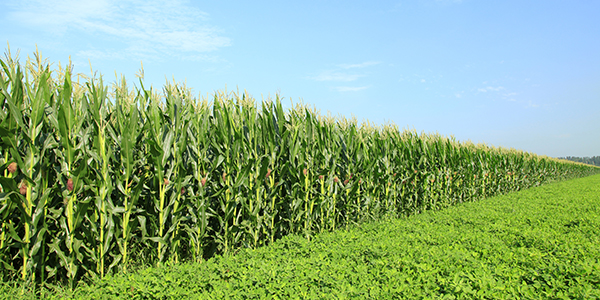AGRONOMICSUPPORT
YOU CAN TAKETO THE FIELD
Identifying and Managing Grey Leaf Spot
Over the course of the last month our corn crop across much of the country has progressed along very nicely. This is leading to a much better crop in some areas than we anticipated at planting time. With this progressing crop we have seen a few corn diseases creep up and try to rob some of that yield though. In this article I am going to discuss a very common corn disease that we have seen this year, Grey leaf spot, or GLS.
Grey leaf spot is a disease that we have known about in corn for a couple of decades now and has caused lots of economic damage to crops in that time frame. It is caused by the fungus Cercospora Zeae-maydis. Many different factors contribute to GLS being present on corn plants. Hybrid susceptibility and weather are probably the two major factors for GLS spread. Infection of the corn plant begins when the spores are present on a plant during longer periods of warm, wet, and humid weather. Typically, between 75-85°F with either rainfall or high humidity is when we will see GLS really take off. With the warm weather much of the county has experienced over the past month this disease has really taken off in areas that have received any amount of rainfall.
Identifying GLS is usually not too tricky depending on the severity of the infection. It can be confused for some other diseases like bacterial leaf streak or eyespot. There is one main identifying characteristic of GLS though that sets it apart from these other diseases. GLS will start as some small brown dots on the leaves of the plants and as it grows it will elongate to create rectangular brown lesions on the leaves. A GLS lesion will be very narrow because it will stay within the leaf margin it is growing in. Other corn diseases that can look similar will have wavy edges because they don’t stay within the leaf margins whereas GLS will be distinct, straight edges. Shown below are a few examples of what it looks like on a corn plant.
According to what I have seen, and what publications from universities are showing, you can see up to a 20-30% yield loss if GLS gets bad enough. Let’s talk about a few ways we can manage and control this disease.
- Select hybrids that have a high tolerance to GLS
- The fungus overwinters in corn residue at the soil surface, so whatever you can do to manage residue, whether that is with tillage or a crop rotation, will help.
- Use a fungicide if you have a field that is infested with GLS.
So, in conclusion, GLS can be, and has been, a major problem for us this year and over the past few years, but there are things we can do to minimize our risk of getting the disease. If you have a field that is already infested with GLS, or would like to know more about it, please contact your local LG Seeds Technical Team Agronomist so that they can come, look at your field, and determine if a fungicide application is warranted.
References and additional information:






Technical Team Agronomist